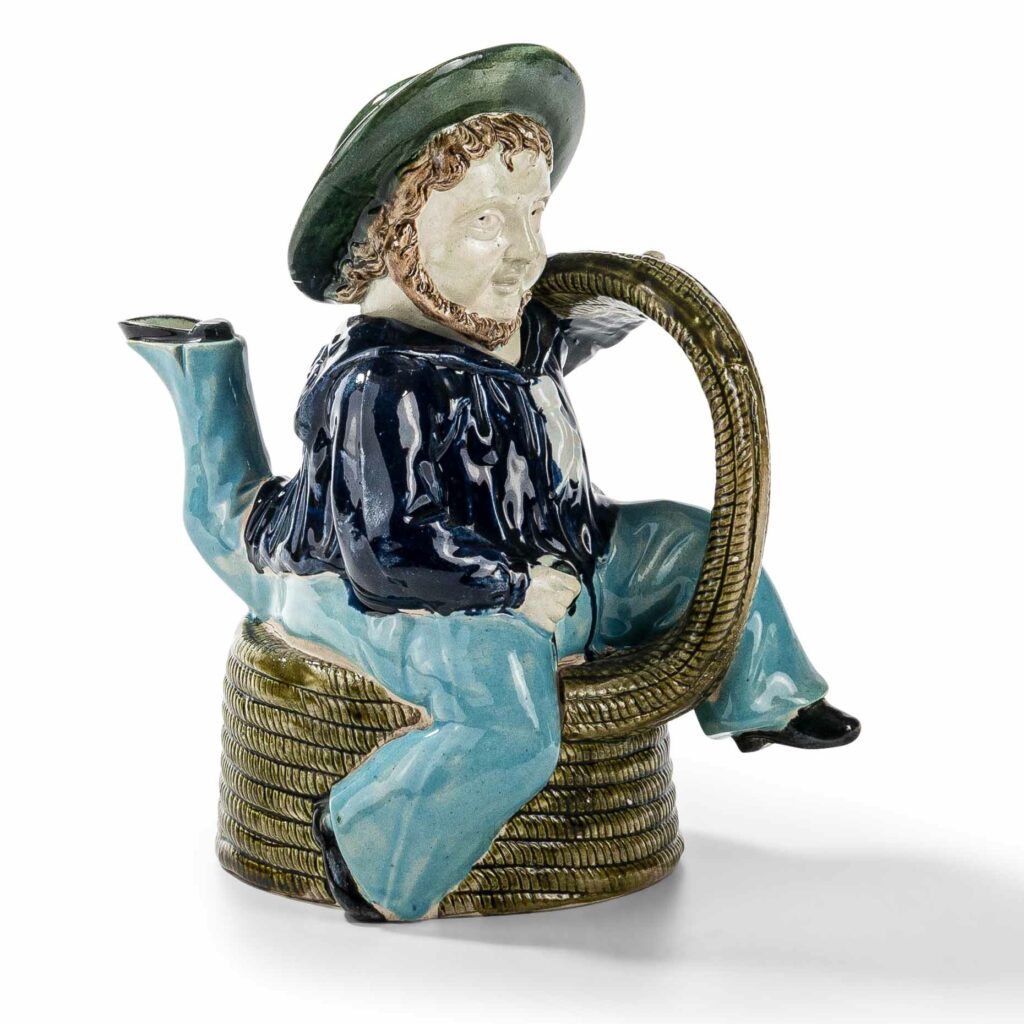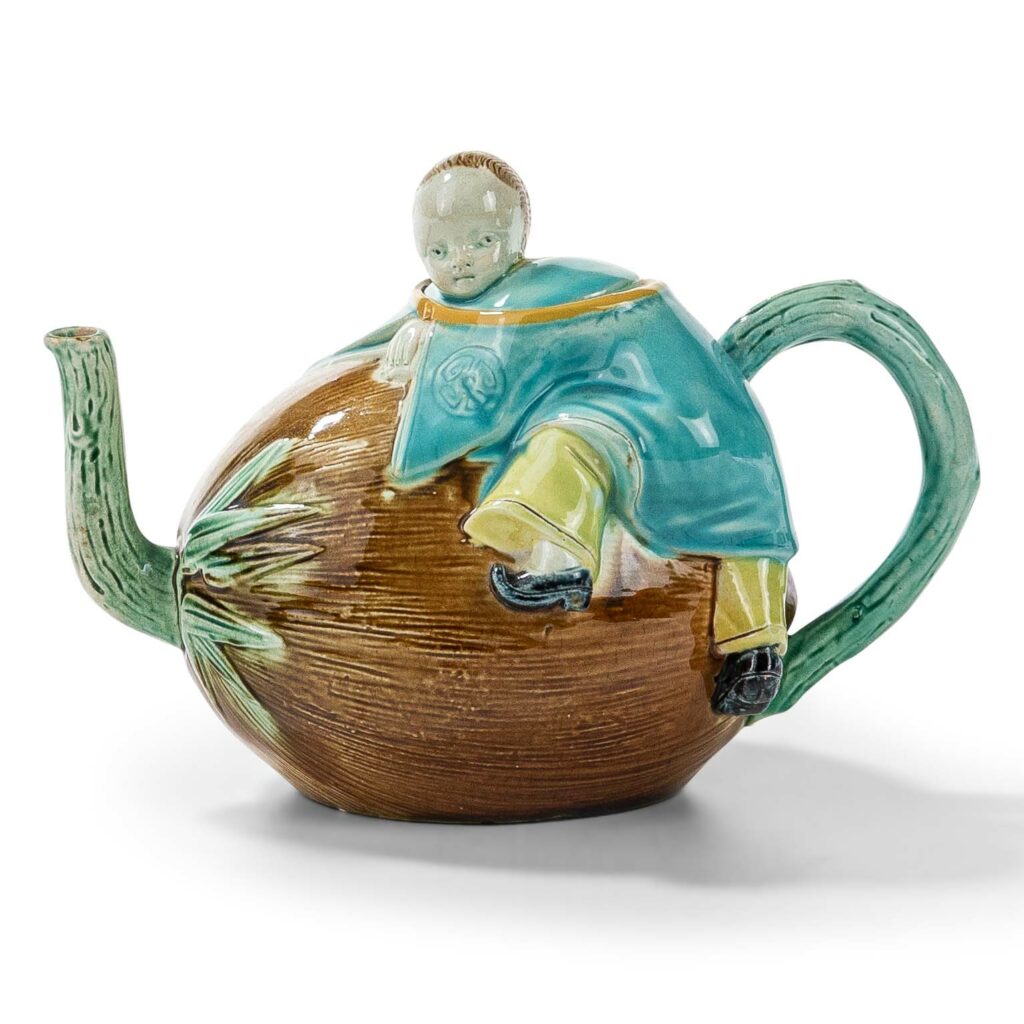Majolica’s birth to the World in 1851 at an exhibition held at London’s Crystal Palace is credited to the Frenchman Léon Arnoux and his work at Minton. It is defined by its rich use of lead glazed enamel colors combined with its strong modeling in the Victorian taste. Certainly, inspired by their Renaissance predecessors though fundamentally different than the earlier tin glazed earthenware.
Minton was a firm at the forefront of manufacture along with Wedgwood, George Jones, Joseph Holdcroft, Thomas Forester, and numerous others. The firms produced vibrant lead glaze enamels designed to attract the eye and ornate modeling, none more whimsical than teapots. There has always been a particular fascination with teapot collecting in many mediums, and majolica teapots in their varieties and imaginations have continually commanded strong attention.
British Victorians loved the bright colors, and there were many influences in majolica pottery designs, including ocean life, botanicals, animals, vegetables, Oriental themes, and mythical and human figures.

Estimate $2,000-4,000
A rare and highly sought-after example of Minton majolica teapots is the spiny fish (decorated in blue and green with splashes of yellow). The body is modeled with a wave-formed base and vegetation-form handle mounted with a snail.

Estimate $400-600

Estimate $600-800
Wedgwood’s use of shells and coral in colored glazes to a white argenta ground also reminds us of the sea and is a tip of the cap to Josiah Wedgwood and his love of the sea. Also inspired by the sea, a sailor teapot modeled as a three-legged figure seated atop a tree trunk with a branch-form handle and wearing a top hat, known as the Isle of Man teapot, was manufactured in several variations, one inscribed under the base “W. Broughton China Rooms 50 Duke St Douglas”, and likely produced as a souvenir for the tourist trade. The three legs are likely in homage to the motif on the Isle of Man flag.
Animal motifs are always popular, and none more so than monkeys. Minton’s monkey teapot portrays the figure clutching a coconut, his curling tail forming the handle. Outdoing itself, Minton also produced a most whimsical pot with a monkey-form handle and rooster spout, the finial modeled as a snail.
Did someone say rooster? George Jones’s delightful model of a rooster teapot, naturalistically colored, and modeled as if ready to run, is both lifelike and amusing. Florals and nature are also popular themes in pottery and porcelain. Desirable subjects are depicted in a Brown-Westhead, Moore & Co. teapot with naturalistic raspberries, blossoms, and butterflies. Another example by Holdcroft shows flower blossoms against a simulated bark body.

Estimate $600-800
Asian influences, and western interpretations of Asia, are well represented in majolica pottery. Examples include a model of a Chinese boy clutching a coconut, a seated figure of a man, which in the 19th century was referred to as a “Chinaman” with masked spout, and a rectangular form with paneled sides and depictions of Chinese figures in water landscapes.
Consider reading:
On the Surface: Monochrome Glazes and Bubble Structure in Chinese Ceramics







